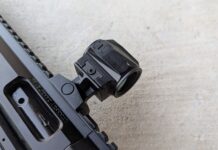
What image pops into your head when you hear the words “pocket knife”?
In the gun world these days, it’s likely:
- A folding knife with:
- A liner lock (or maybe an axis lock or lock-back),
- A thumb stud, hole, or disc for easy one-handed opening,
- G10 or Micarta scales in black, green, tan, or grey,
A Tanto, drop-point, or (if you’re lucky) Wharncliffe-style blade 3-4 inches long, - With a pocket clip.
The “Tactical Folder”.
In the 20 years I’ve been regularly carrying a knife this has been my default choice, from my afterschool jobs working at a butcher shop to my foray into blades as defensive tools.
And why not? It makes perfect sense that if you’re going to carry a general-purpose knife you’d want something rugged that you don’t have to baby. Life goes on and needs change. My job no longer requires manual labor, and the cutting tasks I normally encounter are either opening Amazon packages or trimming an errant thread.
Enter knives of a bygone era that deserve more attention:
I’m talking about the gentleman’s pocket knife. If your dad didn’t carry one of these, your granddad almost certainly did. These are the smaller, slimmer 2-3 in bladed knives from Buck, Case, and Great Eastern Cutlery.
Most of the folks from Gen-Z forward will likely be most familiar with this knife format once I say “Swiss Army Knife”
These are far from tactical. You need both hands to open the knife, there’s no pocket clip, the blades are relatively thin, and the knife doesn’t lock open. But they carry a lot of advantages as well.
Firstly, one of the biggest benefits is the fact that they’re not tactical. Pulling out one of these in mixed company is more likely to spark a conversation than it is to make someone uncomfortable. And to those hard-charging warriors out there that think etiquette doesn’t matter, I’ll remind you that even the Samurai would remove their katana before entering someone’s home.
Another advantage is that these small-format slip joint knives are not only incredibly useful for most of our daily needs, but they also offer an opportunity for personal expression.
For most men, the accessories are pretty limited. Wallet, maybe a watch, possibly a lighter, and the ubiquitous pocket knife. There is a cornucopia of blade steels, profiles, scales, and liners to choose from. You see much more exotic materials like horn, bone, and various hardwoods.
While there are certainly artisans in both arenas, there seems to be a greater appreciation for craftsmanship when it comes to slip joint knives. Nowhere is this more evident than the fascination with the “Walk & Talk” of the blade (how solidly it locks and audibly clicks into its different open positions).
Now if your daily life requires that you’re carving through carpet, drywall, or metal than these definitely are not the right tool for the job. But for most of us weekend warriors who take time off from our office jobs to go to gun school, I think it’s definitely time to bring back the slip joint. In a world where so many consumer goods have become so homogenized, it’s worth injecting a little beauty into our day-to-day lives.
If you want to get more exposure to these gems I’d highly recommend checking out 3 Finger Mac on Facebook, even if it’s just to oggle some very classy knife porn.



